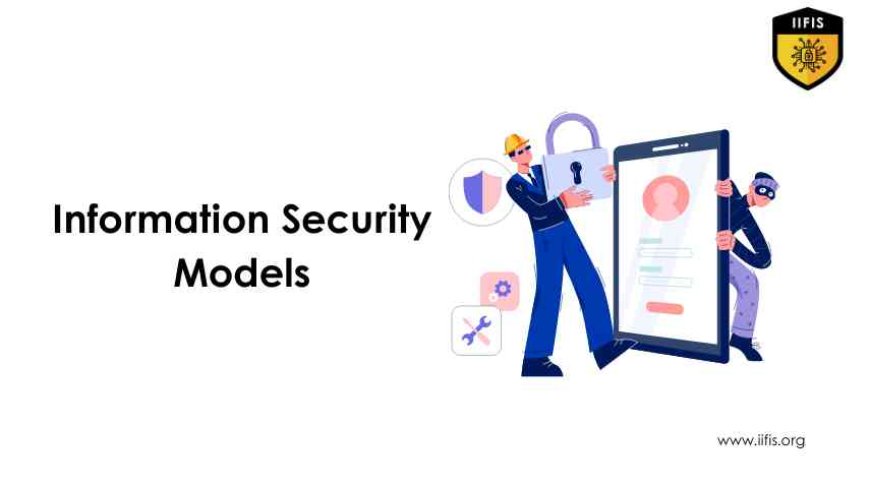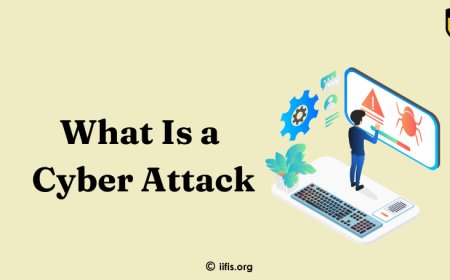Essential Information Security Models to Know
Discover the essential information security models, including Bell-LaPadula, Biba, Clark-Wilson, Brewer-Nash, and HRU, and learn how each model addresses different security needs to protect your data effectively.

Understanding key models is crucial for protecting data and maintaining robust security practices. Information security models provide frameworks and principles that guide the development and implementation of security measures, ensuring that sensitive information is protected against threats. From the Bell-LaPadula model to the Biba model and the Clark-Wilson model, each offers unique perspectives on confidentiality, integrity, and access control. Grasping these models helps organizations create effective security policies, manage risks, and defend against potential breaches. In this blog, we'll look into essential information security models you need to know and how they can enhance your security strategy.
What is Information security?
Information security refers to the practices and measures taken to protect information from unauthorized access, disclosure, alteration, and destruction. It encompasses a range of activities designed to ensure the confidentiality, integrity, and availability of data.
Key aspects of information security include:
-
Confidentiality: Ensuring that sensitive information is only accessible to authorized individuals or systems.
-
Integrity: Protecting data from being altered or tampered with by unauthorized users.
-
Availability: Ensuring that information and resources are accessible to authorized users when needed.
Information security involves various strategies and tools, including encryption, access controls, security policies, and regular audits, to protect data from cyber threats and violations.
Bell-LaPadula Model
Overview and Purpose
The Bell-LaPadula Model is a security model designed to enforce confidentiality in computer systems. It primarily focuses on preventing unauthorized access to classified information, ensuring that sensitive data is not exposed to individuals without the appropriate clearance.
Key Principles
-
No Read Up (Simple Security Property): Users cannot access information at a higher security classification level than their own. This prevents lower-level users from viewing more sensitive data.
-
No Write Down (Star Property): Users cannot write information to a lower security classification level. This ensures that data is not leaked from higher to lower security levels.
Applications and Use Cases
The Bell-LaPadula Model is widely used in military and government environments where strict confidentiality is required. It helps in safeguarding classified and sensitive information by controlling access based on security clearance levels. This model ensures that data integrity is maintained and that information does not inadvertently reach individuals who lack the necessary authorization.
Biba Model
Overview and Purpose
The Biba Model is a security model aimed at ensuring the integrity of information systems. Unlike the Bell-LaPadula Model, which focuses on confidentiality, the Biba Model is designed to prevent unauthorized or inappropriate modification of data, ensuring its accuracy and reliability.
Key Principles
-
No Write-Up (Star Property): Users cannot write data to a higher integrity level than their own. This prevents users from contaminating more critical data with potentially untrusted information.
-
No Read Down (Simple Integrity Property): Users cannot read data at a lower integrity level than their own. This ensures that users do not rely on less reliable or potentially compromised data.
Applications and Use Cases
The Biba Model is commonly applied in systems where data accuracy and consistency are critical, such as in financial systems, database management, and other environments requiring rigorous data integrity controls. It helps maintain the quality and trustworthiness of information by enforcing rules that prevent lower-integrity data from influencing higher-integrity data.
Clark-Wilson Model
Overview and Purpose
The Clark-Wilson Model is designed to enforce data integrity through well-formed transactions and separation of duties. It focuses on ensuring that data is accurate and that transactions are conducted in a controlled and reliable manner. This model aims to prevent unauthorized modifications and ensure that data is manipulated correctly.
Key Principles
-
Well-formed Transactions: Transactions must be executed according to predefined rules that ensure data integrity. This means all operations must comply with the integrity constraints set by the system.
-
Separation of Duties: Different roles and responsibilities must be assigned to different individuals to prevent any single person from having excessive control over transactions. This reduces the risk of fraud or errors.
Applications and Use Cases
The Clark-Wilson Model is particularly useful in commercial and financial systems where maintaining data integrity is crucial. It is used in environments where transactions need to be securely controlled and verified to prevent unauthorized changes or fraud. The model helps ensure that all data manipulations are performed by authorized individuals and follow established procedures.
Brewer-Nash Model
Overview and Purpose
The Brewer-Nash Model, also known as the Chinese Wall Model, is designed to maintain confidentiality in dynamic environments where users' actions and data access need to be controlled based on their past interactions. It focuses on preventing conflicts of interest and ensuring that sensitive information remains confidential.
Key Principles
-
Access Control Based on User’s Past Actions: The model enforces access restrictions based on the user’s previous interactions with sensitive data. If a user has accessed certain information, they are restricted from accessing related or competing data to prevent conflicts of interest or breaches of confidentiality.
Applications and Use Cases
The Brewer-Nash Model is especially useful in systems dealing with competitive or sensitive information, such as financial trading systems, legal firms, and consulting agencies. It helps prevent situations where users might gain an unfair advantage or compromise confidentiality by ensuring that their access to information is controlled based on their previous activities. This model is particularly valuable in environments where managing and mitigating conflicts of interest is crucial for maintaining trust and security.
Harrison-Ruzzo-Ullman (HRU) Model
Overview and Purpose
The Harrison-Ruzzo-Ullman (HRU) Model focuses on dynamic access control and rights management in computer systems. It provides a framework for managing and changing user access rights flexibly and securely, addressing the need for dynamic adjustments to permissions based on evolving requirements.
Key Principles
-
Description of Access Rights: The HRU Model defines access rights in terms of capabilities and permissions that users have. It allows for dynamic modification of these rights, making it adaptable to changes in user roles or system requirements.
-
Capabilities-Based Access Control: Users are granted capabilities that define their access to resources. These capabilities can be modified dynamically to reflect changes in user roles or system policies.
Applications and Use Cases
The HRU Model is particularly suited for systems with dynamic and complex access requirements, such as large-scale enterprise environments, cloud computing platforms, and systems with varying user roles and permissions. It helps manage access control in environments where user roles and system needs frequently change, ensuring that permissions are adjusted appropriately and securely.
Comparative Analysis of Security Models

1. Bell-LaPadula Model
-
Strengths:
-
Strong focus on confidentiality.
-
Effective in environments where preventing unauthorized access to sensitive data is critical.
-
Weaknesses:
-
Does not address data integrity or availability.
-
Not suitable for environments where users need to share data with different security levels.
-
Best Use Cases:
-
Military and government systems where strict confidentiality is required.
2. Biba Model
-
Strengths:
-
Emphasizes data integrity and prevents unauthorized modifications.
-
Ensures accurate data handling and prevents corruption.
-
Weaknesses:
-
Does not address confidentiality concerns.
-
May be less effective in environments where confidentiality is a primary concern.
-
Best Use Cases:
-
Financial systems, database management, and environments requiring high data integrity.
3. Clark-Wilson Model
-
Strengths:
-
Enforces well-formed transactions and separation of duties.
-
Strong focus on maintaining data integrity through controlled transactions.
-
Weaknesses:
-
Complexity in implementing and maintaining separation of duties.
-
May require significant changes to existing systems.
-
Best Use Cases:
-
Commercial and financial systems where transaction integrity and separation of roles are crucial.
4. Brewer-Nash Model
-
Strengths:
-
Prevents conflicts of interest by controlling access based on past actions.
-
Effective in managing sensitive information in competitive environments.
-
Weaknesses:
-
Complexity in tracking and managing access based on user history.
-
May be less practical in environments with less dynamic or competitive data.
-
Best Use Cases:
-
Systems dealing with competitive or sensitive information, such as financial trading and legal firms.
5. HRU Model
-
Strengths:
-
Flexible and dynamic access control based on capabilities.
-
Adaptable to changes in user roles and system requirements.
-
Weaknesses:
-
Complexity in managing and updating dynamic access rights.
-
Potential challenges in ensuring consistent security policies.
-
Best Use Cases:
-
Large-scale enterprise environments, cloud computing platforms, and systems with complex access requirements.
Understanding different information security models, such as Bell-LaPadula for confidentiality, Biba for data integrity, Clark-Wilson for well-formed transactions, Brewer-Nash for preventing conflicts of interest, and HRU for dynamic access control, is essential for effective data protection. Each model is designed to address specific security needs based on the environment and requirements.
Choosing the right model is crucial for securing your data appropriately. To expand your knowledge and implement these security frameworks effectively, explore further learning opportunities with institutions like IIFIS (International Institute for Information Security). Enhance your skills and stay updated to ensure robust protection for your information.
























